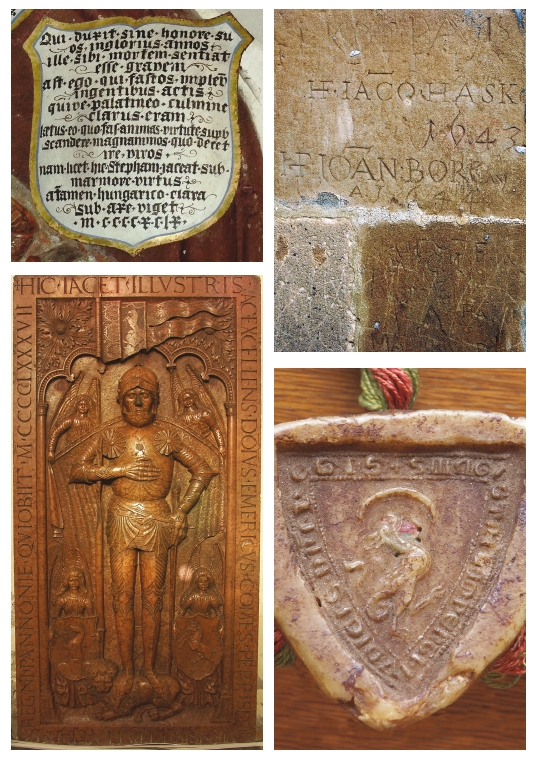Historical Inscriptions and Epigraphy
or – how to read and use inscriptions from 5 centuries ago.
The course is taught by: prof. PhDr. Juraj Šedivý, MAS, PhD. a Mgr. Viktória Halajová
Form of teaching: lecture with seminar (P:1,5 / S:0,5)
ECTS: 3
Objective:
The course is intended for students who will come into contact with historical inscriptions in practice, e.g. on everyday objects, tombstones (museologists, archaeologists), murals and other paintings (art historians), seals (archivists) or any architecture (historians, guides, etc.). The course teaches how to read historical inscriptions as they were used in our territory in antiquity, the Middle Ages and the early modern period (up to about 1800) and how to date them indicatively and evaluate them critically so that their knowledge can be used in practice. It will also teach how to find and interpret secondary sources (references to inscriptions in other written sources, especially canonical visitations). It is a practically oriented course that combines theoretical lectures with practical reading and analysis of contemporary inscriptions, so that the graduate can better apply himself in the practice of museums, galleries, monuments' offices, etc.
Brief outline:
- Introduction – written culture and the birth of writing, especially Latin
- Historical inscriptions – definition, terminology
- Epigraphy (definition of the subject, development of the discipline, aims and current trends)
- Methodology of professional description of historical inscriptions
- Typology of inscriptions according to content, location, media
- Techniques of making inscriptions
- Overview of the development of writing on historical inscriptions
- Selected epigraphic media and their inscriptions (stone tombstones, boundary markers, cast bells and baptismal fonts, murals and sgraffito, panel painting, graffiti and dipinti, glass, stained glass and mosaics, liturgical objects, textiles, objects /not/ of everyday life, inscriptions on coins and seals)
- Secondary written sources of epigraphy (codicological and diplomatic sources, special canonical visitations).
- Secondary pictorial sources and literature (card catalogues, databases, catalogues)
- Electronic editions (basics of xml-language for historians and demonstration of processing of one source)
Graduation Requirements:
- Attendance - 3 hours may be missed without excuse,
- Seminar paper (professional description of any inscription before 1800 - 25%)
- Final assessment during the exam period = 75% (assessment of theoretical and practical knowledge in the form of a test).
Recommended reading:
- ŠEDIVÝ, Juraj: Historické nápisy a ich nosiče, Bratislava 2019 (dostupné online na Academia.edu)
- ŠEDIVÝ, Juraj a kol.: Latinská epigrafia. Dejiny a metodika výskumu historických
- nápisov. Bratislava 2013 (podstatná časť dostupná na webe katedry)
- HIŠEM, Cyril – FEDORČÁK, Peter (eds.): Kanonické vizitácie po tridentskom koncile. Prešov 2007.
Further Literature:
- Deutsche Inschriften online.
- LOPATKOVÁ, Zuzana: Canonical Visitations of the North-Western Part of the Podhorie Deanery in the Second Half of the 16th Century and in the 17th Century. Trnava 2014.
- PIERAZZO, Elena - BURGHART, Marjorie. Digital Scholarly Editions: Manuscripts, Texts and TEI Encoding; [video series available on youtube].




